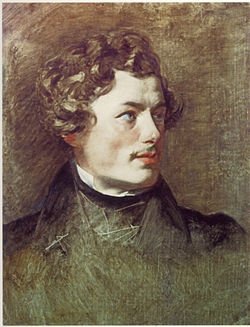Josef Danhauser

Josef Danhauser (19 August 1805 in Laimgrube (now a part of Mariahilf or Neubau) – 4 May 1845) was an Austrian painter, one of the main artists of Biedermeier period, together with Ferdinand Georg Waldmüller, Peter Fendi, among others. His works, not very appreciated in his time, dealt with very moralising subjects and had a clear influence of William Hogarth.
Joseph Danhauser was born in Vienna in 1805, the eldest son of sculptor and furniture manufacturer Joseph Ulrich Danhauser and his wife Johanna (née Lambert).
He took his first painting lessons with his father and later assisted the Vienna Academy of Fine Arts. He studied with Johann Peter Krafft and made his first exhibition 1826.
Invited by Johann Ladislaus Pyrker, patriarch of Venice, he visited the city of Doges, where he started to study the Italian masters. He came back to Vienna via Trieste in 1827, visiting Prague. On 27 March 1827 he and his colleague de:Johann Matthias Ranftl molded Ludwig van Beethoven’s death mask, roughly 12 hours after his death[4][5] and Danhauser painted a water-colour representing his deathbed. In 1828, he spent some time in Eger, with an invitation of this Hungarian city archbishop Pyrker. He solicited him for some pictures for the gallery of the Archdiocese.[6]
After his father’s death in 1829, his brothers and he managed his furniture factory during the Biedermeier movement, being the precursors of modern design. That made him put his painting career aside.
